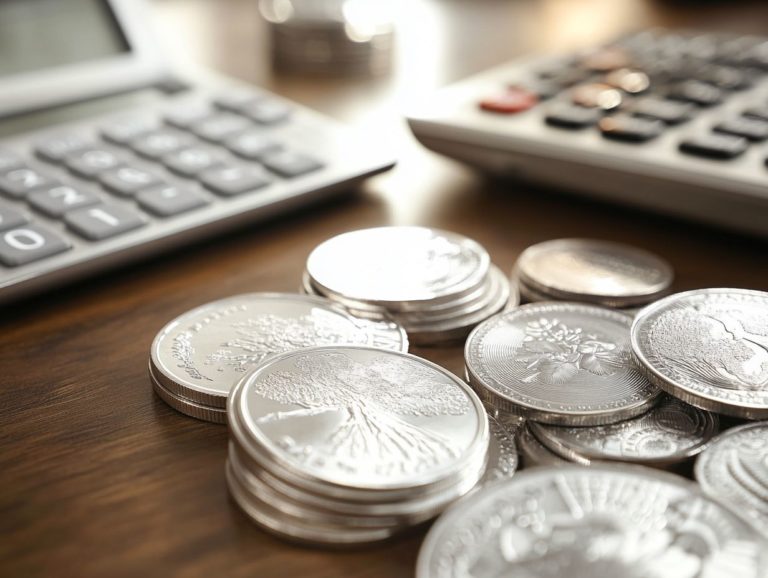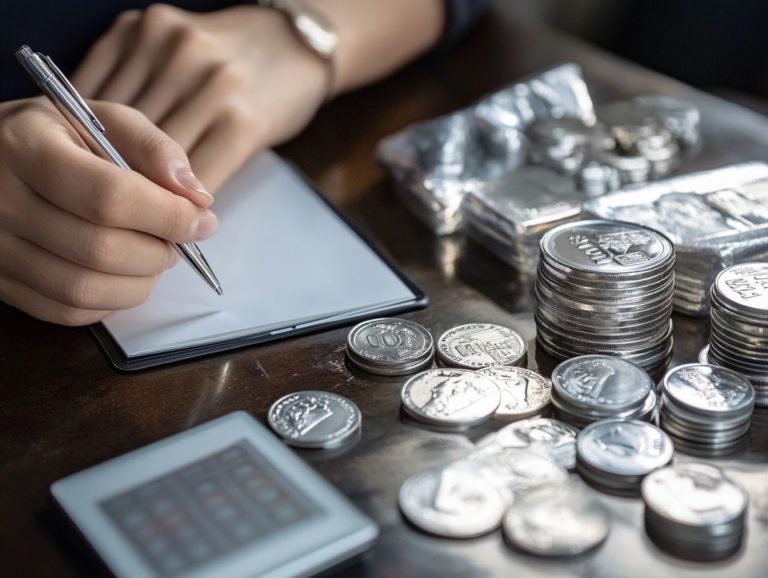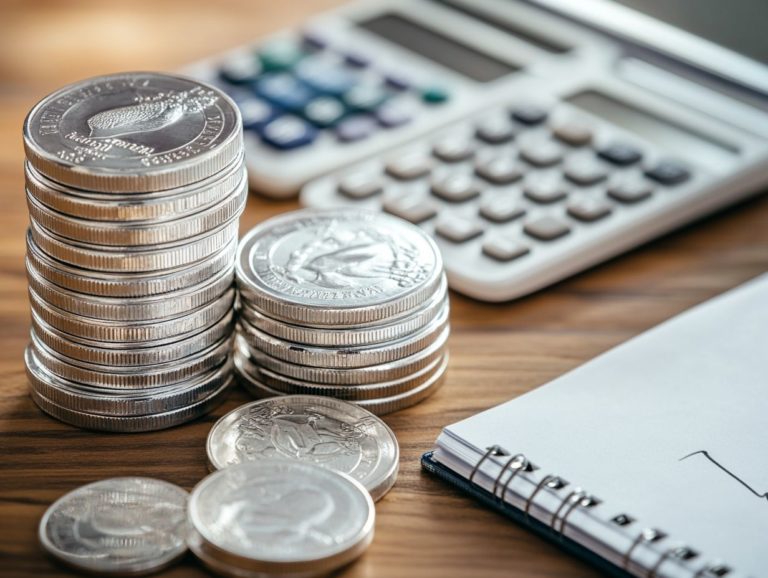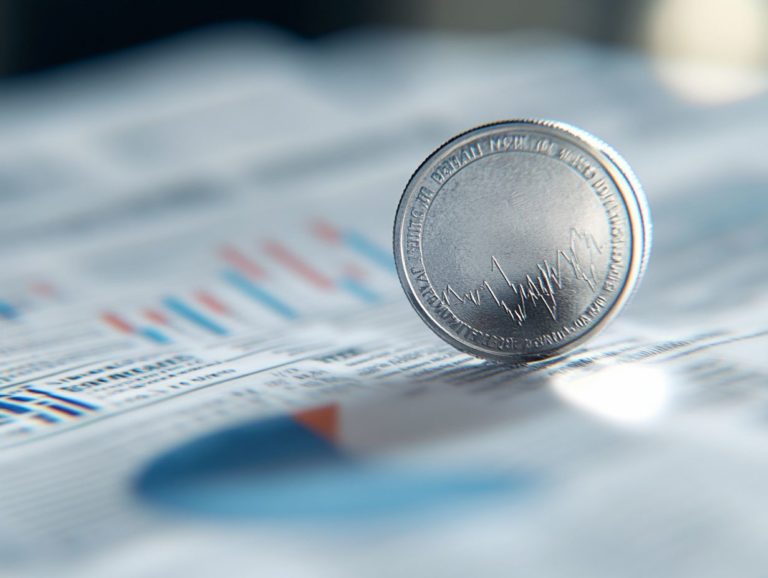What Drives Demand for Silver in Industry?
Silver is more than just a precious metal. It plays a key role in various industries, such as electronics and renewable energy.
The rapid evolution of technology fuels the growing demand for silver, making it a crucial component in modern solutions.
However, increasing production comes with challenges. Supply imbalances and environmental concerns complicate the situation.
This article explores the factors driving silver’s demand and the obstacles affecting its supply. It will also look at what the future holds for this versatile metal.
Contents
- Key Takeaways:
- The Importance of Silver in Industry
- Factors Driving Demand for Silver
- Challenges in Meeting Demand for Silver
- Future Outlook for Silver in Industry
- Frequently Asked Questions
- What drives demand for silver in industry?
- Why are silver’s unique properties so vital for its demand in industries?
- What role do technological advancements play in driving demand for silver in industry?
- How does the global economy affect the demand for silver in industry?
- What are some specific industries that drive demand for silver?
- How does investor sentiment affect the demand for silver in industry?
Key Takeaways:

- Silver is crucial in many industries due to its unique properties, like its excellent ability to conduct electricity.
- The demand for silver continues to grow, driven by technology and renewable energy sources.
- While demand rises, supply and environmental issues may create challenges.
The Importance of Silver in Industry
Silver is vital in numerous fields, including electronics, healthcare, and renewable energy. It s known for its excellent ability to conduct electricity and its antibacterial properties.
As highlighted by the Silver Institute, industrial demand for silver is growing due to new technologies and innovative uses, reinforcing its importance in the modern economy.
Factors Driving Demand for Silver
Several factors shape the demand for silver. Key among them are advancements in technology and the increasing focus on renewable energy.
As industries rely more on silver’s unique properties, its prices fluctuate with the changing dynamics of supply and demand.
Technological Advancements
Recent technological advancements have put silver in the spotlight. Its unique properties are particularly valuable in electronics.
Industries are leveraging silver’s ability to conduct electricity and its antibacterial qualities. This trend is driving up its applications and investments.
For instance, RFID chips use silver’s efficient conductivity to improve communication systems. Advanced components like thin-film solar cells also rely on silver to enhance energy efficiency and output.
As businesses adopt these technologies, demand for silver rises, creating promising investment opportunities. Silver s versatility supports a thriving market and highlights its importance in future technology.
Growing Popularity of Renewable Energy

The increased interest in renewable energy, particularly solar energy, drives up the demand for silver. Its essential role in solar cells makes it crucial for clean energy solutions.
Countries like China, India, and the U.S. are investing heavily in sustainable energy, boosting industrial demand for silver.
The spike in demand arises from silver’s ability to enhance solar panel efficiency. Global initiatives, like the International Solar Alliance, further support investments in solar infrastructure.
As nations aim for carbon neutrality, silver’s role in sustainable energy becomes even more significant. This not only underscores silver’s economic value but also its environmental impact in creating a sustainable future.
Challenges in Meeting Demand for Silver
Despite the increasing demand for silver across multiple industries, you may encounter several big challenges that hinder effective supply management. These issues can lead to imbalances between supply and demand, ultimately affecting silver prices.
Factors such as fluctuating mine production and growing environmental concerns add layers of complexity to the landscape of silver production and distribution.
Supply and Demand Imbalances
Supply and demand imbalances in the silver market present big challenges for various industries, impacting silver prices and potentially leading to shortages. The widening gap between increasing demand for silver and fluctuating mine production has created a risky situation for stakeholders like you.
Recent reports reveal that mine production isn t keeping up with the soaring global demand, particularly fueled by technological advancements in renewable energy and the electronics sector. The surge in photovoltaic solar panels has significantly heightened silver consumption.
However, many mining operations face operational setbacks, often due to stringent environmental regulations and declining ore grades. This dissonance not only affects market dynamics driving prices upward but also reshapes investment strategies.
As an investor, you may find yourself considering alternative options or stockpiling silver in anticipation of future deficits. As the landscape continues to evolve, closely monitoring production trends will be essential for making informed investment decisions.
Environmental Concerns
Environmental concerns surrounding silver production are increasingly coming to the forefront, raising important questions about the sustainability of its industrial applications. The mining processes involved in extracting silver often challenge your understanding of ecological integrity and responsible resource management.
These practices can disrupt local ecosystems, leading to habitat destruction, soil degradation, and water contamination serious issues that threaten both wildlife and human communities alike. The repercussions extend beyond immediate environmental impacts, influencing the social fabric of communities that depend on these ecosystems for their livelihoods.
To tackle these pressing challenges, stakeholders are actively exploring innovative strategies designed to promote sustainable practices in silver extraction. By implementing responsible mining techniques, such as hydrometallurgical methods a process of extracting metals using aqueous solutions in place of traditional smelting processes, you can significantly reduce the environmental footprint.
Engaging local communities in decision-making is crucial to ensure that their knowledge and needs are taken into account, fostering a sustainable approach that prioritizes both ecological health and social equity.
Future Outlook for Silver in Industry
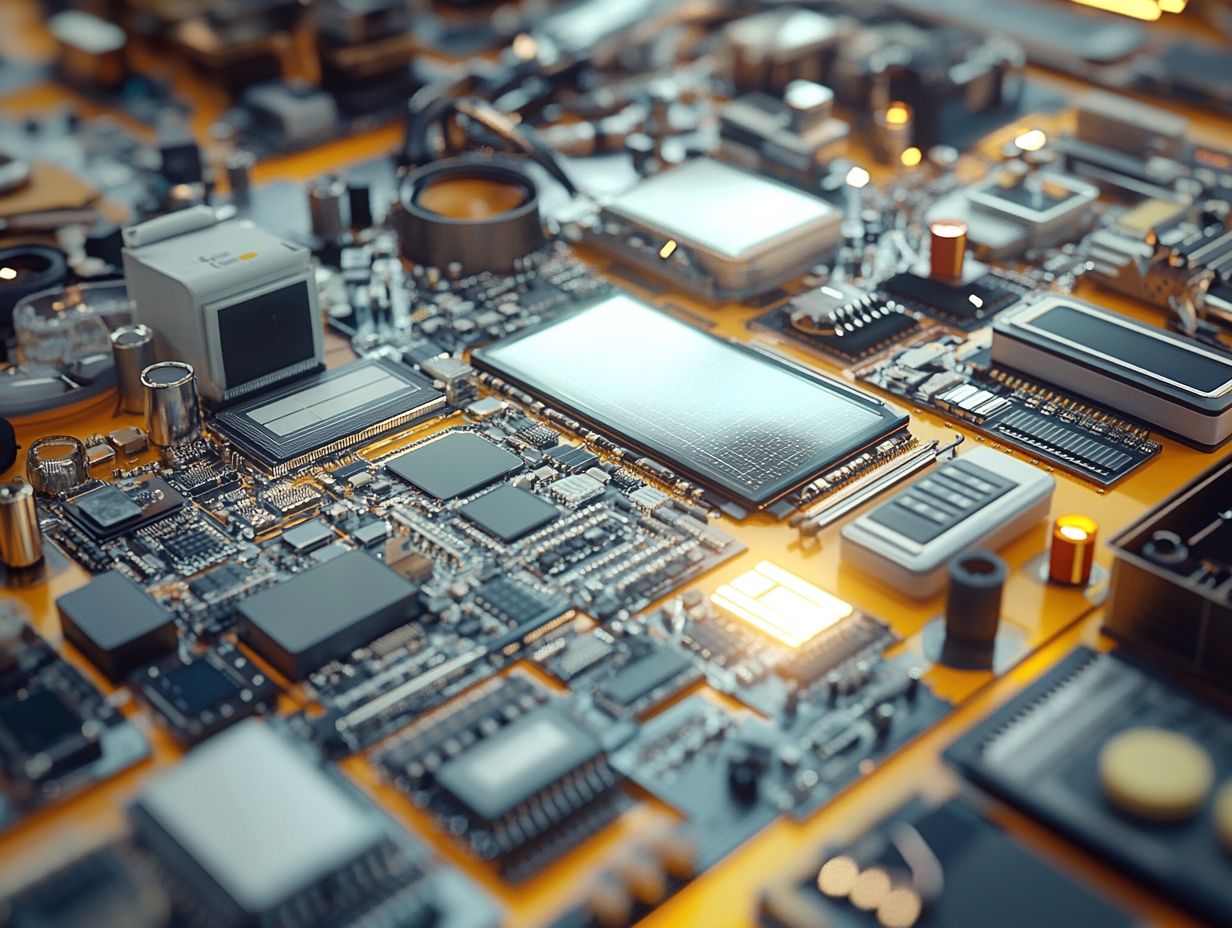
Get ready! The future looks bright for silver in many industries, as projected growth in demand is expected to sustain elevated silver prices. This is largely driven by industrial needs and the innovative applications of silver in emerging technologies.
Forecasts suggest that sectors like renewable energy and electronics will be pivotal in shaping the market trajectory of silver, presenting you with exciting opportunities ahead.
Stay alert for the latest trends in silver to make the best investment choices!
- Increasing use in renewable energy.
- Demand in electronics and technology.
- Environmental regulations impacting production.
Projected Growth and Potential Limitations
Projected growth in the silver industry points to a promising future. Notable increases in industrial demand are primarily driven by advancements in renewable energy and technology.
However, potential limitations, such as regulatory challenges and fluctuating silver prices, could pose obstacles to this growth trajectory.
The renewable energy sector, especially in solar panel manufacturing, is set to greatly enhance the demand for silver, thanks to its excellent conductive properties. There is also a growing interest in medical applications, such as antimicrobial coatings a layer that prevents the growth of harmful bacteria and diagnostic devices, which further highlight the versatility of this precious metal.
Yet, amidst these promising developments, challenges like stringent regulations that promote sustainable mining practices must be navigated. The uncertainty in global markets can impact pricing, creating a complex landscape that requires careful consideration.
To fully capitalize on the potential growth opportunities within the sector, stakeholders must remain vigilant.
Role of Key Countries in Silver Production
The role of key countries in silver production is crucial for understanding the global supply chain and the dynamics of the silver market. Major producers like China, Mexico, and Peru greatly affect the supply of silver and its pricing.
Countries like the United States, Japan, and South Korea also play vital roles in both silver mining and fostering demand across various industries. These countries play a crucial role in shaping the silver supply landscape!
Political stability, trade agreements, and economic policies directly impact silver prices and demand. For example, any fluctuations in mining regulations or export tariffs can trigger immediate market reactions, affecting global investors and manufacturers.
Geopolitical tensions create uncertainty, prompting investors to seek silver as a safe-haven asset, which drives prices higher.
Understanding these intricate connections is essential for participants aiming to navigate the complexities of the silver market effectively.
Frequently Asked Questions
What drives demand for silver in industry?

The main drivers of demand for silver in industry include its unique physical properties, technological advancements, and global economic conditions.
Why are silver’s unique properties so vital for its demand in industries?
Silver is highly conductive, reflective, malleable, and ductile, making it a valuable component in various industrial processes such as electronics, solar panels, and medical equipment.
What role do technological advancements play in driving demand for silver in industry?
As technology advances, the demand for silver increases due to its use in various cutting-edge applications such as electric vehicles, 5G technology, and biotechnology.
How does the global economy affect the demand for silver in industry?
The economic conditions of major industrial countries, such as the United States, China, and India, greatly impact the demand for silver. It is used in a wide range of industries, including automotive, construction, and jewelry.
What are some specific industries that drive demand for silver?
Silver is used in various industries, including electronics, photography, jewelry, medical equipment, and automotive, making it a versatile and in-demand metal.
How does investor sentiment affect the demand for silver in industry?
Investor sentiment and speculation can impact the demand for silver in industry, as it is often seen as a safe-haven investment during economic uncertainty or inflation.










